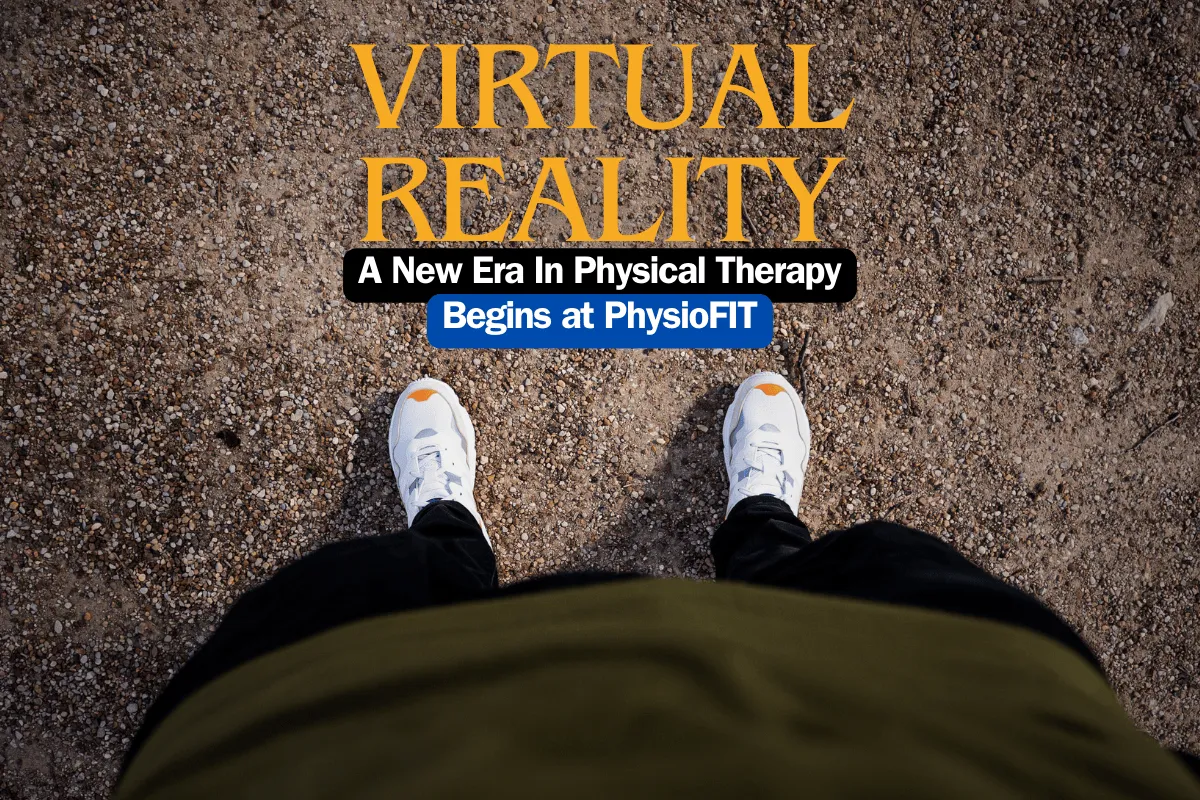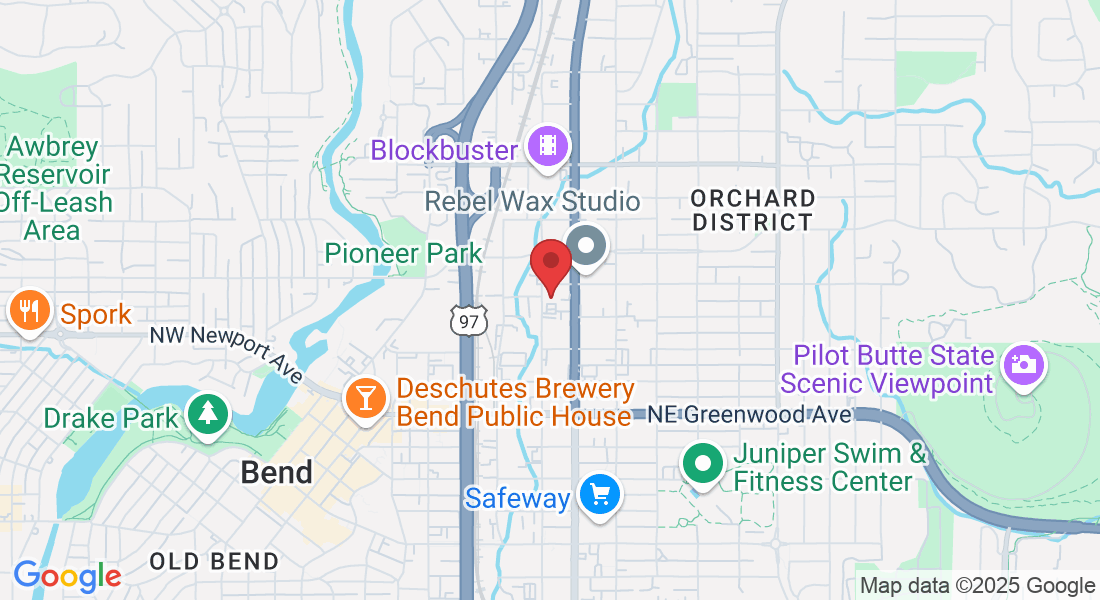TMJ Relief
Unlock Relief From TMJ Pain
If you're struggling with discomfort and dysfunction in your jaw, you've come to the right place. Temporomandibular joint (TMJ) disorders, or TMD, as they are also known, can severely impact the quality of your life, leading to significant jaw pain, headaches, and hindrances in performing simple tasks like opening and closing your mouth. By diving deeper into understanding the complexities of TMJ disorders, we're equipped to provide innovative and tailored physical therapy solutions for effective TMJ pain relief.
Experience TMJ Relief like Never Before with PhysioFit: We take a deeply personalized approach to your health, comprehending that every TMJ pain sufferer requires a unique treatment plan. Leveraging the power of evidence-based, fitness-driven physical therapy in bend, we strive to offer more than temporary relief. We aspire to improve your overall well-being, stave off persistent pain and accelorate your recovery process, allowing you to effortlessly resume your normal life.
What You Should Know
Healthcare providers classify TMDs into three categories:
Disorders of Your Jaw Joints: These involve complications in the jaw joints themselves, often manifesting as clicking, popping, or grating sounds during jaw movement.
Disorders of Your Chewing Muscles: This category includes issues related to the muscles responsible for chewing, where patients may experience persistent or intermittent muscle pain.
Headaches That Result From TMD: A significant fraction of TMD sufferers may experience headaches or migraines as a consequence of jaw joint or muscle dysfunction, significantly affecting their quality of life.
A proper diagnosis of a TMJ or TMD problem involves a thorough evaluation from a professional.

Some of The Most Common Causes of TMJ Pain
The onset of TMD isn't attributed to one solitary cause. Instead, it tends to emerge from a diverse array of factors, often in combination.
Jaw injury: Injuries such as a broken or dislocated jaw can directly affect the temporomandibular joint, leading to TMJ disorders. Such physical trauma can disrupt the alignment and smooth functioning of the jaw joint, inducing pain and discomfort.
Teeth Grinding or Clenching (bruxism): Frequent teeth grinding or clenching, often a subconscious habit during sleep or periods of stress, can exert excessive pressure on the TMJ, contributing to its dysfunction. Over time, this can lead to wear and tear, causing persistent pain and other TMJ-related symptoms.
Arthritis in Your Jaw Joint: Arthritis, an inflammatory condition, can affect any joint in your body, including the TMJ. The inflammation and degeneration associated with arthritis can cause joint pain and stiffness, impairing normal jaw movement.
Malocclusion: Malocclusion refers to the misalignment of teeth when the jaws are closed, which can put additional strain on the TMJ. This imbalance can force the jaw joint to work harder to achieve efficient biting and chewing, increasing the risk of TMJ disorders.
Stress: High levels of stress can lead to physical manifestations such as increased muscle tension or clenching of teeth, both of which can place undue strain on the TMJ. Chronic stress can exacerbate these physical responses, thereby contributing to TMJ pain and dysfunction over time.
If any of this information resonates with your current situation, we urge you to schedule an appointment with us immediately. Don't let hip pain diminish your life quality - allow us to help you embark on the path to relief today.
Can I Prevent TMD or TMJ Pain?
While it's true that certain risk factors contributing to TMJ dysfunction are beyond our control, there are still practical steps you can take to minimize the likelihood of developing this condition:
Make Use of a Mouth Guard During Sleep: Nighttime teeth clenching or grinding, known as bruxism, can significantly contribute to TMJ dysfunction. By wearing a mouth guard as you sleep, you can effectively mitigate this risk, protecting your jaw joints from undue pressure.
Ensure You're Protected in High-Risk Situations: When participating in contact sports, your facial area is more susceptible to injuries. Utilizing a mouth guard during such activities can offer invaluable protection for your jaw, reducing the risk of TMD.
Prioritize Maintaining Good Posture: The alignment of your neck and head plays a vital role in the functioning of your jaw. By ensuring good posture, you can maintain optimal alignment, thereby reducing strain on your TMJ.
Embrace Stress Reduction Practices: Stress can lead to unconscious habits such as jaw clenching, which can exacerbate or lead to TMD. Techniques such as meditation or mindfulness exercises can help manage your stress levels, offering indirect yet essential protection against TMJ dysfunction.

Common Symptoms of TMJ Pain
Jaw Tightening or Stiffness
Jaw Pain
Jaw Clicking or Popping
Trouble Closing or Opening Your Mouth.
Headaches or Migraines
Earaches or Toothaches
Ringing in Your Ears (tinnitus)
Teeth Fitting Together Differently (malocclusion)
Remember, if you resonate with any of the symptoms or conditions mentioned, we highly recommend making an appointment with us for a thorough evaluation and personalized treatment plan.
Please Note: The information provided on our website is intended for general education and is not a substitute for professional medical advice. Each individual's situation and body is different. Therefore, what may work for one person may not work for another. We care about your well-being and advise you to reach out to us to discuss your specific needs before implementing any advice from our website.
Your Source for All Things Physical Therapy in Bend Oregon
The PhysioBlog

PhysioFIT's VR Edge: Pioneering a New Era in Physical Therapy in Bend
Physical Therapy In Bend Oregon
Please Note: The information provided on our website is intended for general education and is not a substitute for professional medical advice. Each individual's situation and body are different. Therefore, what may work for one person may not work for another. We care about your well-being and advise you to reach out to us to discuss your specific needs before implementing any advice from our website. If you’d like to explore this more or would like to schedule a time with a physical therapist in Bend Oregon, contact us at PhysioFITBend.com
Introduction
In Bend, Oregon, a cutting-edge transformation is reshaping the field of physical therapy, led by the pioneering efforts of PhysioFIT. As the only clinic in the area harnessing the power of Virtual Reality (VR), PhysioFIT is redefining recovery and rehabilitation processes. This innovative approach perfectly aligns with Bend's dynamic, outdoor lifestyle, offering a unique blend of technology and therapeutic expertise.
By integrating VR into our practice, PhysioFIT stands at the forefront of modern physical therapy, providing a highly engaging, personalized treatment experience that is unmatched in the region. This progressive technique not only aligns with the active spirit of our community but also elevates patient care to new heights, setting PhysioFIT apart as a leader in innovative and effective rehabilitation solutions.
The Rise of VR in Physical Therapy: A Technological Leap
Virtual Reality in physical therapy is a groundbreaking advancement, reshaping our approach to rehabilitation and recovery. By integrating VR, our therapists at PhysioFIT are offering immersive, interactive treatments that elevate the patient experience far beyond traditional methods.
Benefits of VR in Physical Therapy:
Enhanced Engagement and Motivation: VR transforms repetitive, mundane exercises into engaging, interactive experiences. This heightened engagement motivates patients, encouraging regular participation and adherence to therapy programs. It helps focus your mind in ways it wouldn’t normally focus while doing most traditional therapies.
Improved Cognitive and Physical Outcomes: VR scenarios are not just visually stimulating but are also designed to improve cognitive functions and motor skills. This is particularly beneficial in neurological and pediatric conditions where conventional exercises might fall short in sustaining interest.
Real-time Feedback and Adaptability: One of the most significant advantages of VR is its ability to provide immediate feedback. This allows therapists to adapt rehabilitation programs in real-time, addressing the individual needs and progress of each patient. Our PT’s can see what you see while you’re wearing the VR goggles.
VR for Diverse Conditions:
Neurological Rehabilitation: VR plays a crucial role in the rehabilitation of neurological conditions. For patients recovering from a stroke, managing Parkinson's disease, or dealing with multiple sclerosis, VR aids in enhancing balance, coordination, and fine motor skills. The immersive nature of VR helps in retraining the brain, fostering neuroplasticity.
Orthopedic Recovery: In the realm of orthopedic rehabilitation, VR is a game-changer. Whether it's post-surgical rehabilitation or managing chronic pain, VR offers innovative exercises that enhance strength, flexibility, and mobility. It's particularly effective in addressing conditions like ankle sprains, knee surgery recovery, and shoulder pain.
Pediatric Therapy: For children, VR turns physical therapy into a fun, engaging activity. Conditions like cerebral palsy, autism, and developmental delays require a specialized approach, and VR's playful, interactive nature holds their attention, making therapy sessions more effective.
Innovations and Research: The Scientific Backing
The efficacy of VR in physical therapy is backed by growing research. Studies consistently demonstrate improvements in balance, coordination, strength, and overall mobility among patients using VR, as opposed to traditional rehabilitation methods. These findings are crucial in cementing VR's role as a safe, effective, and innovative tool in physical therapy. With the new addition of Virtual Reality into the clinic, PhysioFIT is “leading the pack” among physical therapists in Bend.
Expanding the Scope: VR in Various Therapeutic Settings
Vestibular Rehabilitation: VR is proving to be invaluable in vestibular rehab, especially in conditions causing vertigo and balance issues. Custom VR scenarios challenge the vestibular system, aiding in faster recovery.
Chronic Pain Management: For chronic pain sufferers, VR provides a unique form of distraction therapy, helping in pain management and improving quality of life.
Sports Rehabilitation: Athletes in Bend can benefit from VR, especially for injury prevention and performance enhancement. VR simulations can mimic sport-specific movements, aiding in targeted rehabilitation.
Conclusion
Virtual Reality in physical therapy, as championed by PhysioFIT, represents much more than a technological leap; it marks a significant paradigm shift in patient care and rehabilitation methodologies. In the lively and active community of Bend, Oregon, PhysioFIT is leading the way with VR, not just as a tool but as a transformative pathway in the rehabilitation experience. This technology dovetails with the community's ethos of active living, providing an avenue for accelerated recovery and substantial improvement in overall quality of life for those undergoing therapy.
At PhysioFIT, the implementation of VR transcends traditional therapy boundaries, offering a holistic approach that addresses both physical and mental well-being. This innovative platform ensures that recovery encompasses not just regaining strength or mobility, but re-engaging with life in a meaningful and enjoyable manner. For our PhysioFIT patients, this means a rehabilitation experience that is both effective and empowering, fostering a sense of achievement and progress with every session.
Moreover, PhysioFIT's adoption of VR in our practice underscores our commitment to embracing advanced technology to deliver the highest standard of healthcare. It reflects our dedication to providing innovative treatment options, grounded in scientific research and ensuring safety, reliability, and effectiveness.
By integrating virtual reality physical therapy (VR physical therapy) at PhysioFIT, we're not just setting a new benchmark in patient care; we're enhancing lives. In doing so, we are not only promising a brighter, healthier future for our patients but also opening up a world of possibilities, free from the constraints of physical limitations. For the Bend community and beyond, PhysioFIT's introduction of VR in physical therapy is a stride towards a future where cutting-edge technology and expert human care converge to create transformative, immersive, and deeply impactful healing experiences.
FAQ
Q: What makes VR different from traditional physical therapy methods?
A: Unlike traditional methods, VR offers an immersive, interactive experience that can be tailored to each patient's specific needs, providing a more engaging and potentially faster rehabilitation process.
Q: Can VR physical therapy be used at home?
A: Yes, with the right equipment and guidance from a therapist, VR physical therapy can be adapted for home use, allowing for greater flexibility and convenience in treatment.
Q: How does VR impact mental health during physical therapy?
A: VR has been shown to positively influence mental health by reducing anxiety and improving mood, which can be particularly beneficial in the holistic recovery process.
Please Note: It's important to note that any exercises or techniques that are shared should be performed under the guidance of a qualified bend physical therapy expert to ensure correct technique and to prevent injuries. A physical therapist can provide a customized exercise program based on the individual's fitness level, goals, and any existing injuries or conditions. If you’d like to explore this more or would like to schedule a time with a physical therapist in Bend Oregon, contact us atPhysioFITBend.com
Copyright PhysioFIT 2025 . All rights reserved


